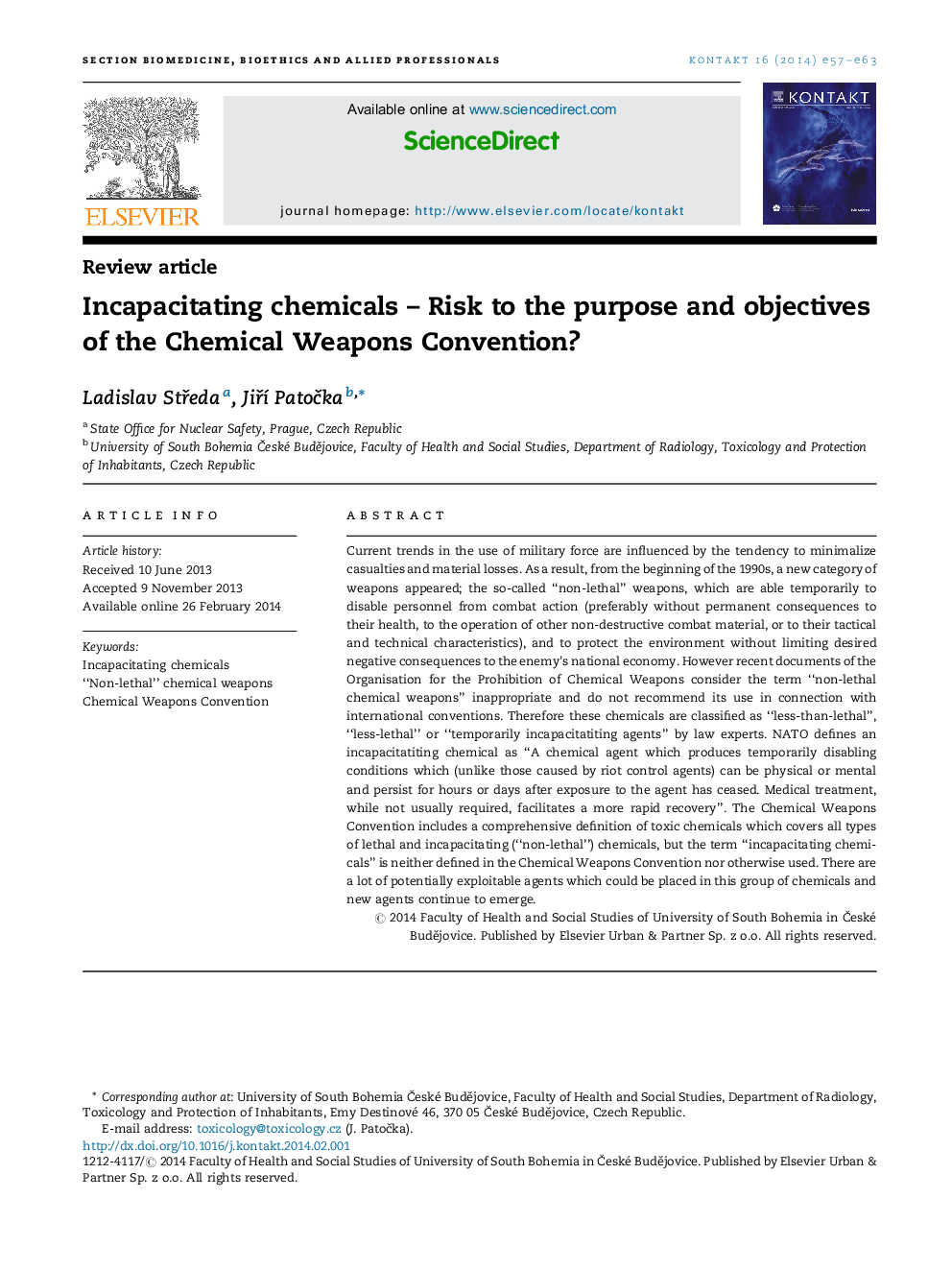| کد مقاله | کد نشریه | سال انتشار | مقاله انگلیسی | نسخه تمام متن |
|---|---|---|---|---|
| 1084392 | 951277 | 2014 | 7 صفحه PDF | دانلود رایگان |
Current trends in the use of military force are influenced by the tendency to minimalize casualties and material losses. As a result, from the beginning of the 1990s, a new category of weapons appeared; the so-called “non-lethal” weapons, which are able temporarily to disable personnel from combat action (preferably without permanent consequences to their health, to the operation of other non-destructive combat material, or to their tactical and technical characteristics), and to protect the environment without limiting desired negative consequences to the enemy's national economy. However recent documents of the Organisation for the Prohibition of Chemical Weapons consider the term “non-lethal chemical weapons” inappropriate and do not recommend its use in connection with international conventions. Therefore these chemicals are classified as “less-than-lethal”, “less-lethal” or “temporarily incapacitatiting agents” by law experts. NATO defines an incapacitatiting chemical as “A chemical agent which produces temporarily disabling conditions which (unlike those caused by riot control agents) can be physical or mental and persist for hours or days after exposure to the agent has ceased. Medical treatment, while not usually required, facilitates a more rapid recovery”. The Chemical Weapons Convention includes a comprehensive definition of toxic chemicals which covers all types of lethal and incapacitating (“non-lethal”) chemicals, but the term “incapacitating chemicals” is neither defined in the Chemical Weapons Convention nor otherwise used. There are a lot of potentially exploitable agents which could be placed in this group of chemicals and new agents continue to emerge.
Journal: Kontakt - Volume 16, Issue 1, March 2014, Pages e57–e63
